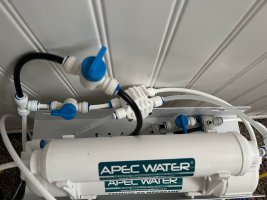What people are trying to tell you is that if you repeatedly remove and reinsert tubing into a quick connect fitting... the chances it will start leaking is high. The stainless steel "teeth" inside the fitting that bite onto the tube do a tiny bit of damage to the tube every time you insert/remove the tube from the fitting.
If you install a little bypass (tee and micro ball valve), your chances of getting a leak are much, much lower.
In some cases, such as where you plan to hook the system up, use it, and then unhook it and store it, this will also be an issue. See our Coupling Assembly for a high quality work around.
https://www.buckeyehydro.com/coupling-assembly/
Russ











![Craft A Brew - Safale BE-256 Yeast - Fermentis - Belgian Ale Dry Yeast - For Belgian & Strong Ales - Ingredients for Home Brewing - Beer Making Supplies - [3 Pack]](https://m.media-amazon.com/images/I/51bcKEwQmWL._SL500_.jpg)














































